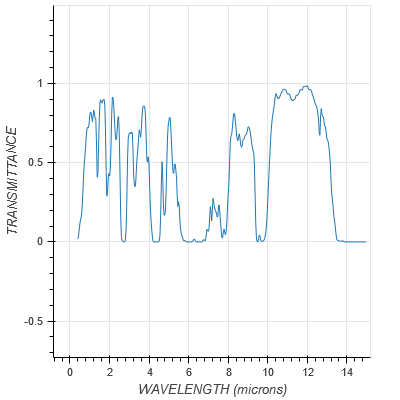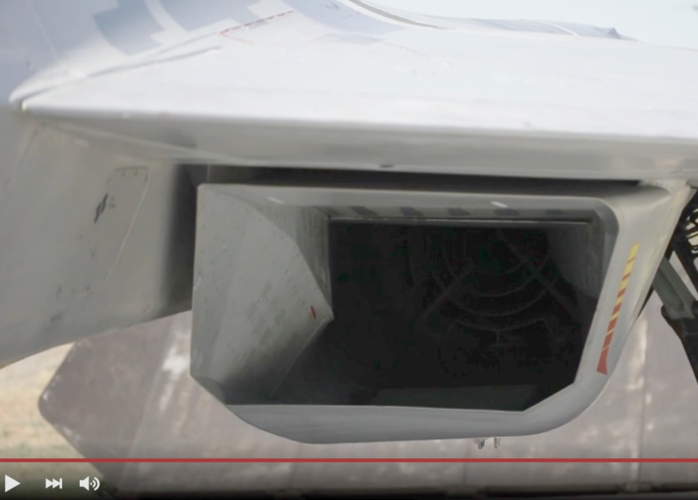- Joined
- 27 December 2005
- Messages
- 17,027
- Reaction score
- 22,266
I'll split the topic later.
Think of it like this, there are 5 different radio emitters on Su-57, and these things are expensive. If using radar remove all advantage of stealth, Russian wouldn't put that many on Su-57
Lower frequency radars seem largely limited to ground stations. That seems like a bit of a win for low RCS aircraft. The one exception I know of is the E-2D, which is supposed to be a UHF band radar and apparently uses some form of computer black magic to generate target grade tracks. But we are still talking about a dedicated multi-engined platform with a huge fairing.
But the bigger question to me is whether a row RCS aircraft is really cost prohibitive in the first place. The F-35 is now at nearly the same price per copy as an F-18. There probably is a lot of sunk cost in R&D specifically related to composite materials and shaping, but that is spread across about 600 examples and counting. The main drawback the Su-57 seems to have in that regard is that the production rate and number of users of the aircraft are going to be much lower than F-35, which makes it harder to justify some program costs. This may or may not have influenced Russian attitudes and requirements for RCS; I don't think anyone definitively knows.
Regarding ESM and aircraft detection, I believe I read an article that said one of the modes of operation for the F-22's radar was to stay passive except for spot lighting targets detected by the ESM system. The advantage here being while you will give away your presence, it should only be to the target(s) of your interest and anything else immediately down the bearing. The figure I read for the beam was on the order of 2 degrees, which if correct would mean that pretty much only the target or other aircraft in its flight would detect the illumination. But I've only read one source on that so I'm not positive this is an existing capability. I'd be a little surprised if the F-35 couldn't manage this with its newer avionics though.
You are talking about djcross? I think he only worked on F-22.Considering the detailed changes between Phase 1 and Phase 2 frames (note the main weaponbay doors for instance) they have good understanding of the details and where they are worth it. According to the now chief engineer of the project, T-50 exceeded the stealth requirements. And someone who has worked on the stealth of F-22 and F-35 claimed T-50 is "metal marble class". Personally i dont think T-50 is as stealthy as F-22 - but i think it is stealthier than what most people give it credit for being.All the evidence points to a basic airframe configuration optimised for low RCS from the front only, with lesser regard for other angles.
The existing Su-57 airframes don't show the attention to detail needed for a truly low (VLO) RCS. We have no idea what the requirement was however - presumably it meets the requirements in the area.
I have never seen an official document which states the design rationale for SU-57 low observables.
I can speculate that the SU-57 design provides an X-band detection advantage over western Gen 4 fighters. SU-57 edge alignment and RAM treatments likely provide effective X-band RCS reduction. This gives SU-57 first shot/A-pol advantage against Gen 4 fighters which would guard high value targets such as AWACS. NATO relies on AWACS directed Gen 4 fighters for air defense. Without the Air Battle Management coordination of fighters and long range L-band sensor capabilities of AWACS, NATO is vulnerable to air attack.
NATO has no effective SAM defenses, so SU-57 does not need RCS treatments to protect against S-band SAMs. SU-57 does not appear to possess S-band RAS features which some western fighters possess.
This speculative design philosophy is radically different that F-22 and F-35, where RCS was intended to counter the vast proliferation of Russian SAMs which would otherwise inhibit operation inside the IADS.
Su-57 in Akhtubinsk, from the jubilee edition "80 years of Sukhoi Design Bureau".

sound like a great solution, but how much aerosol in weight you need to carry to cool the engine that much though?The nozzle serration is supposed to promote mixing between hot engine exhaust and the cooler ambient air. This reduces the amount of plume emmission coming from the engine. The aerosol takes the game bit further by "actively" cools the exhaust down to the point where its temperature would emit wavelength which be one strongly absorbed by ambient air.
View attachment 645014
For example. In 10000 meter altitude. If one desires to reduce the detectability of the engine or other infra red emmission he has to "cool" the emmission to the wavelength which have 0 transmittance. Means that the infra red energy emitted on that wavelength would be strongly absorbed by atmosphere. As seen at above chart from MODTRAN web app. One would wish to cool its engine emmission to about 6 micron wavelength or 9 micron or down to 14 micron. These wavelengths correspond to temperatures of 756, 595 and 480 Degrees Celcius. Typical Jet engine exhaust temperature is about 900 K or about 1173 Degrees Celcius.
First serial:
You would think they went the extra mile and re-numbered the side Bort Numbers. No need to be reminded of that crash every day, right?
But is this the one that crashed or in fact no. 02 renumbered to 01?
Original 01First serial:
But is this the one that crashed or in fact no. 02 renumbered to 01?

People appear to have missed the first glimpse at the actual radar blocker. I guess most of you watched the video in question (https://www.1tv.ru/shows/chasovoy/vypuski/glic-100-let-na-krylyah-chasovoy-vypusk-ot-18-10-2020) on youtube, where compression kills crucial details. I decided to check the footage at the source and here it is:

Here is the patent and fig. 3 certainly looks familiar, altough there are interesting differences.
https://findpatent.ru/patent/262/2623031.html

It would actually function as both, just due to the nature of the flow going through the blocker. The problem is, you can only see the front face of it. You can almost see some curvature in the wall of the small section at the bottom, the sort of miniature s-duct forming. I was actually more interested in the fixed oblique ramps that are in the sides of the inlets now.That's a weird one. Looks more like a device for flow control rather than a blocker.
